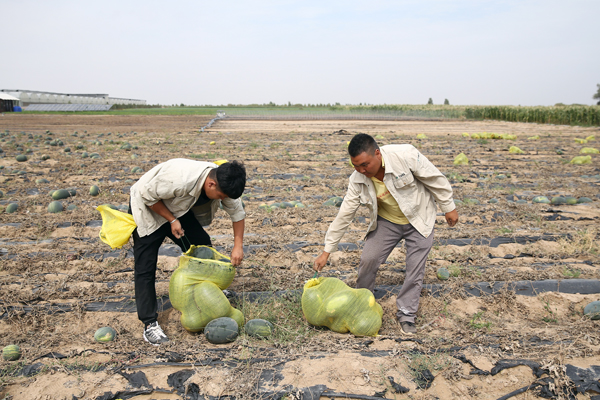A green oasis raising incomes
I have a mission to make our people believe that every single effort made on the land will earn a payback. I will help them to understand that farming can also lead to a prosperous life," he said.
Workers pick watermelons in the desert. [Photo/China Daily] |
The work in Udon Qaidam is a microcosm of China's long battle against desertification, which is often referred to as "cancer of the earth".
Now, the battle is becoming a challenge for many countries and regions across the globe.
In 1994, the General Assembly of the UN adopted the United Nations Convention to Combat Desertification.
As a signatory, China has been active in the implementation of its obligations and has adopted a series of measures to prevent and control desertification.
On Sept 16, at the end of the 13th Session of the Conference of the Parties to the Convention to Combat Desertification, held in Ordos, China was recognized as a model in the fight against desertification.
According to statistics from the State Forestry Administration's latest national survey, the area of desertified land fell by 12,120 square kilometers between 2009 and 2014, while the area of sandy land shrank by 9,902 sq km during the same period.
The administration's data also shows that the number of people living below the poverty line in 12 Northern provinces and regions, including Inner Mongolia, has fallen to 13.42 million from 47.11 million in 2012.
According to Liu Dongsheng, the administration's deputy director, between the 1970s and the 1990s, the area of desertified land in China grew by 10,400 sq km every year. However, during the past decade, it has shrunk by 2,424 sq km every year. "It is a historic change from 'people giving way to sand' to 'sand giving way to greenery'," he said.
